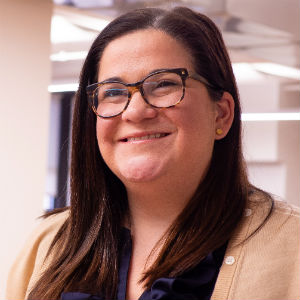HR Administration
The evolving role of a chief people officer
By Yasmeen Qahwash
Feb. 4, 2020
Late last year McDonald’s Corp. Chief People Officer David Fairhurst left the fast-food giant just one day following Chief Executive Officer Steve Easterbrook’s termination after violating company policy by having a consensual relationship with an employee. 
The sudden departures caused a major shift in the McDonald’s C-suite, leaving new Chief People Officer Mason Smoot to deal with the fallout. When that kind of responsibility falls to the chief people officer, what should they do?
Eugenie Fanning, vice president of people at commercial real estate company SquareFoot, looks at the chief people officer’s overall role in the workplace before diving into the nitty gritty. According to Fanning, a chief people officer owns the strategy and execution in bringing and retaining top talent to the workplace.
“They must be able to see the business from the perspective of each employee — both new hires and veteran leaders — and to represent all of those views when coaching senior leadership on communication, management and planning,” Fanning said in an email interview. “This all feeds into the maintenance and care of culture, which everyone contributes to in their own way.”
In recent years, there has been some rebranding around human resources, Fanning said. HR is now often labeled as “people” with the emphasis being more focused on employee engagement rather than paperwork and bureaucracy. “CPOs are emerging as stakeholders in the overall long-term success of companies,” Fanning said. “The evolution of this role is a long time coming. While it may crop up more in growing companies looking to standardize processes, it’s a growing trend everywhere.”

While CPOs generally tend to operate behind the scenes, they play an important role in coaching and directing the behavior of those within the organization. If a scandal does occur, the counsel of the CPO decides what should be said and done going forward while also focusing on how well employees will receive the message.
Also read: Tesla’s CHRO pick points to a new era
“With the appointment of a CPO, the organization has brought on someone they believe embodies their culture, vision and values and who can reinforce those values at all times,” Fanning said. “Whatever the message is, it should represent the views of the company and its leadership.”
Fanning also emphasized how vital it is that the chief people officer be secure in their morals and messaging when put in such a situation.
“There is no black and white answer in many situations and never a set process that guarantees to work all the time,” Fanning said. “You need to be able to analyze what’s happening, detect its impact on the company and employees and help manage the best course of action to rectify the situation in a timely manner.”
Fanning suggests three basic best practices for chief people officers to keep in mind if they ever find themselves or the organization in a scandal:
- Don’t panic. Employees look to the CPO to know how they should feel and react to the situation and will emulate their behavior.
- Understand the repercussions. Look at the situation from all perspectives and make sure to have the vision to see what could happen in the coming weeks.
- Earn a seat at the table. Once the company is back on solid footing, the CPO can emerge as a reliable voice of skepticism.
The chief people officer is seen as a partner to everyone in the company. Whether there is a scandal, they are there to help guide internal and external communication and to maintain a support system for all employees.
“The CPO is someone you’d turn to as a key stakeholder to ensure that the messaging communicated matches the company’s values,” Fanning said.
Schedule, engage, and pay your staff in one system with Workforce.com.
Recommended
Compliance
Minimum Wage by State (2024)federal law, minimum wage, pay rates, state law, wage law compliance
Staffing Management
4 proven steps for tackling employee absenteeismabsence management, Employee scheduling software, predictive scheduling, shift bid, shift swapping
Time and Attendance
8 proven ways to reduce overtime & labor costs (2023)labor costs, overtime, scheduling, time tracking, work hours